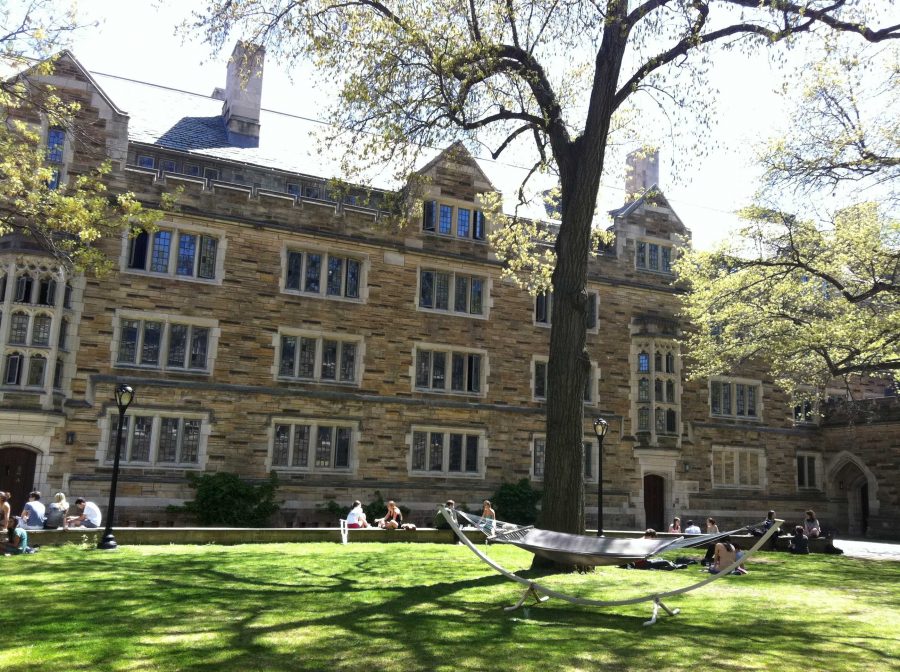College trends throughout the years have shown a gradual increase in liberal arts schools applications and stagnation in applications to large in-state public schools. <!-more->
On Career Center Liaison Miriam Taba’s desk, there is a thin, slightly worn paperback: “Colleges That Change Lives,” by Loren Pope.
In the book is a list of 40 liberal arts colleges not many students have heard of: St. Olaf College, Kalamazoo College, Juniata College, Hendrix College, Agnes Scott and Cornell College — not the one in upstate New York, but the one in Iowa — are among those mentioned in the book.
Taba rifles through the pages. Hamilton College is a great choice due to its low ratio of professors to students, she points out. Earlham College is especially strong for its interdisciplinary focus. Carleton College is one of her favorites.
According to the U.S. News and World Report, which releases an annual ranking of colleges and universities around the nation, liberal arts schools are characterized by their emphasis on the humanities and social sciences. Unlike typical public and private colleges, liberal art schools focus more on building broader global perspectives and learning through smaller class settings.
Taba acknowledges that often, students equate “less-known” with “less prestigious.” However, she disagrees with them, saying that the intimate intellectual environment that small liberal arts schools offer allows students to receive personalized attention from professors and other faculty members.
However, at a high school where science, technology and math are emphasized, Taba said it is no secret that STEM interests influence college paths and career endeavors.
There is a direct correlation between schools that have strong STEM departments and number of MVHS students applying; this has proven to be the case for many years. As Naviance’s cummulative college acceptance history from 2005 to 2013 reveals, the top 6 schools MVHS students— in order of the cummulative number of MV students attending— UC Berkeley, UC Davis, UC San Diego, San Jose State, UC Santa Cruz, and UCLA. As per the general consensus, these schools are known for their strong STEM departments and research opportunities. Taba recognizes this deeply-ingrained convention.
“Previously, college and career choices have been influenced by cultural backgrounds,” she said. “For example, in many countries, becoming a doctor is a prestigious title, so many MVHS students opt for biology or chemistry majors at large in-state public schools.”
For senior Megan Chang, size and prestige do not matter as much as academic standard and learning environment. When Chang thinks of liberal arts school, she thinks of tradition and a closer-knit “family.”
“I don’t like big classes where there’s barely any interaction with the professor, I much prefer personal classroom settings where I can say what I want, when I want,” Chang said. “In class discussions I like the back-and-forth banter and argument that is uncommon in large classes.”
Senior Nishant Jain echoes Chang’s sentiments, even though he is not applying to liberal arts schools. What matters most to him is academic involvement, student initiative, and how active the student body is.
However, a strong STEM department is crucial in his college search. Although open to smaller schools, he acknowledges that larger, more well-known schools have better-funded research programs.
Over the past few years, Taba has observed a slow but conspicuous broadening of college interests. She noticed that from 2009 to 2013, more students, like Chang, are choosing to apply to liberal arts schools, as compared to previous years.
From 2009 to 2013, graduating classes have shown a 130 percent increase in Georgetown applications, a school that heavily emphasizes social science subjects such as international relations and political science. Liberal arts schools Claremont McKenna and Pomona respectively showed a 90% and 160% increase in applications. In contrast, applications to large, in-state public schools such as UC Berkeley, UCLA, UC Davis, and UC San Diego are stagnant. However, their stagnation is not to be confused with a decrease of applications, as each year, the UC campuses listed above still receive around 300 applications each year, while liberal arts schools applications hover around 30-40 applications each year.
According to Taba, the cultural prestige in becoming a doctor or researcher has ironically fueled more medical school-minded students to opt for liberal arts schools.
“I think a lot of students are realizing that to apply to medical school, you need great letters of recommendations from your professors,” Taba said. “When you’re applying to med school, you want your professor to truly know you, and not just know you by a letter grade you got in their class.”
Taba fully encourages students to explore college options beyond conventional and large state schools.
“At a smaller college, you’ll receive terrific opportunities to grow yourself as a person. At a big UC, you can go through the entire college experience anonymously, without making a difference in your college,” Taba said. “Likewise, the college will not make a difference in you.”








